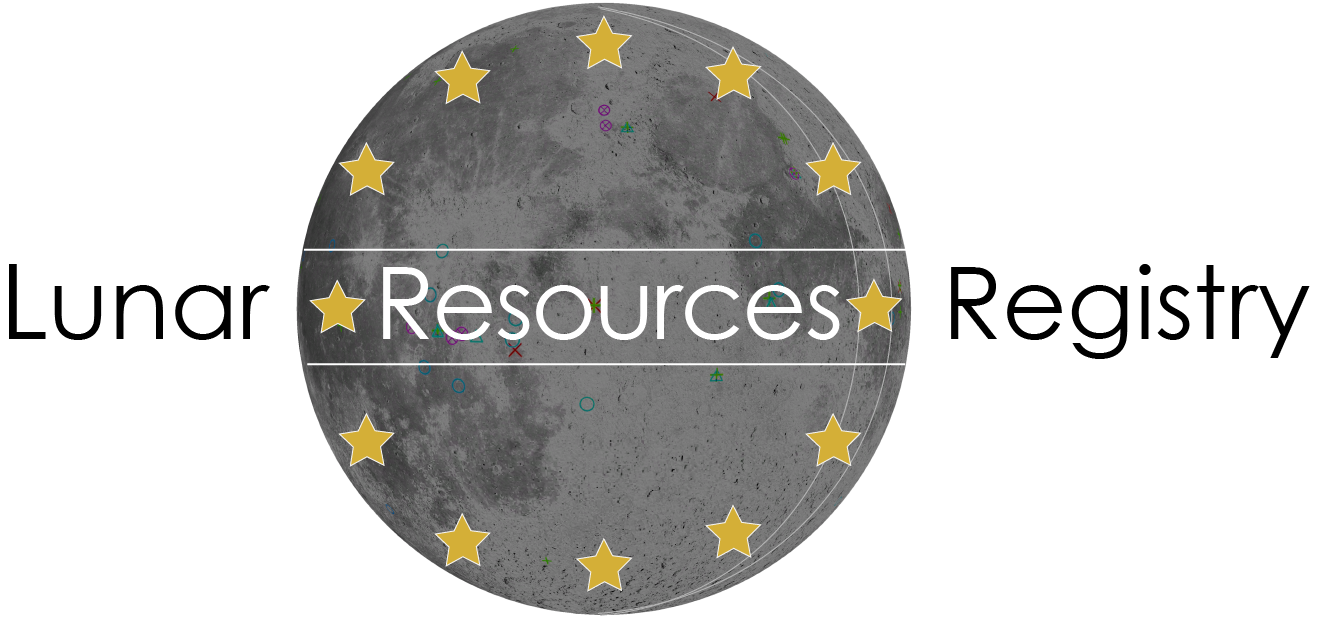Overview: Lunar Resources Registry has developed a process to find and eventually extract resources on the Moon
Lunar Resources Registry’s (LRR) core business is discovering resources on the Moon for markets on the Moon, in Space and on Earth.
LRR is an early-stage Moon Mining company that currently uses remote sensing data and in-house research to identify high-value resources locations that can be explored for resources, which can be extracted commercially within 10-20 years.
The next 10 year activities include activate exploration; regolith sampling and extraction of resources to determine valuation of resources locations.
LRR has since 2020 established a registry of resources on the Moon, based on location and resources type, plus external 3rd party research.
From 2024 LRR is now planning low-cost missions to multiple Lunar resources locations, including establishing a unique Commercial Registration for parties (e.g. mission planners, joint ventures, mining companies, syndicates).
The use of External Research
LRR collates third party research, including for the following areas actively display on our latest online Moon Maps:
Compton-BelkovichCompton-Belkovich: Exploration for Thorium; potential Rare Earth Elements
Compton–Belkovich thorium anomaly: https://www.researchgate.net/figure/Compton-Belkovich-thorium-anomaly-The-location-of-the-CBTA-is-northeast-of-Humboldtianum_fig3_225023973
Compton–Belkovich Volcanic Complex (CBVC): An ash flow caldera on the Moon: https://www.sciencedirect.com/science/article/abs/pii/S0019103515000767
Evidence for explosive silicic volcanism on the Moon from the extended distribution of thorium near the Compton-Belkovich Volcanic Complex: https://agupubs.onlinelibrary.wiley.com/doi/epdf/10.1002/2014JE004719
Krafft, Oceanus Procellarum:Exploration for Iron, Titanium, Platinum Group Metals
Lava flow ages in northeastern Oceanus Procellarum: The need for calibrating crater counting procedures: https://www.sciencedirect.com/science/article/abs/pii/S0019103521004826
Geophysical structure of a local area in the lunar Oceanus Procellarum region investigated using the gravity gradient method: https://link.springer.com/article/10.1007/s11200-024-0502-z
Gravity Gradients Frame Oceanus Procellarum: https://science.nasa.gov/resource/gravity-gradients-frame-oceanus-procellarum/
Hyginus: Exploration for Iron, Titanium, Platinum Group Metals
Compositional Diversity Mapping Of Rima Hyginus And Hyginus Crater Region: https://www.researchgate.net/publication/326826764_COMPOSITIONAL_DIVERSITY_MAPPING_OF_RIMA_HYGINUS_AND_HYGINUS_CRATER_REGION PDF is here: https://www.lpi.usra.edu/pcc/meetings/archive/pcc-9/KumaresanetalPCC9.pdf
An igneous origin for Rima Hyginus and Hyginus crater on the Moon: https://www.sciencedirect.com/science/article/abs/pii/S001910351100265X
Cobra Head at Aristarchus Plateau: Exploration for Iron, Platinum Group Metals
Radar Perspective of the Aristarchus Pyroclastic Deposit and Implications for Future Missions: https://iopscience.iop.org/article/10.3847/PSJ/ad023a
Lunar spinels in the Aristarchus crater and cobra head. https://pure.mpg.de/pubman/faces/ViewItemOverviewPage.jsp?itemId=item_3587302
Reiner Gamma Exploration for Iron, ISRU sites, Rare Earth Elements
Reiner Gamma swirl: magnetic effect of a cometary impact?: https://www.esa.int/Science_Exploration/Space_Science/SMART-1/Reiner_Gamma_swirl_magnetic_effect_of_a_cometary_impact
Reiner Gamma: A Magnetized Elliptical Disk on the Moon: https://agupubs.onlinelibrary.wiley.com/doi/full/10.1029/2019GL082427
Comparative photometric analysis of the Reiner Gamma swirl and Chang’e 5 landing site: https://www.aanda.org/articles/aa/abs/2023/06/aa46098-23/aa46098-23.html
Mare Ingenii – Exploration for Iron, ISRU sites, Rare Earth Elements
Topographic Correlations Within Lunar Swirls in Mare Ingenii: https://agupubs.onlinelibrary.wiley.com/doi/10.1029/2021GL095285
Spectrophotometric and Topographic Correlations within the Mare Ingenii Swirl Region: Evidence for a Highly Mobile Lunar Regolith: https://iopscience.iop.org/article/10.3847/PSJ/ace433
Lunar Ice Deposits: The search for Water and Oxygen on the Moon
NASA’s LRO: Lunar Ice Deposits are Widespread: https://science.nasa.gov/solar-system/moon/nasas-lro-lunar-ice-deposits-are-widespread/
Analyzing the ages of south polar craters on the Moon: Implications for the sources and evolution of surface water ice: https://www.sciencedirect.com/science/article/abs/pii/S0019103519303689
Research of Lunar Water-Ice and Exploration for China’s Future Lunar Water-Ice Exploration: https://spj.science.org/doi/10.34133/space.0026
Principles of the Business Model
The LRR business model is based on the decreasing cost of launch to the Moon and space technology required for exploration, extraction and utilisation, and the increasing cost and scarcity of resources on Earth.
Resources Focus
LRR’s primary goal is to find resources locations of significant value to support exploration missions and extraction operations. Missions and Operations may be joint-venture operations.
Tier 1 Resources Locations are Rare Earth Elements and Platinum Group Metals.
Tier 2 are In-situ Resources Utilizazion (ISRU); where resources such as metals, oxygen can be sourced from regolith and used to support infrastructure on the Moon (e.g. planned bases and landing pads) and in CisLunar space (e.g. refuelling, propulsion)
